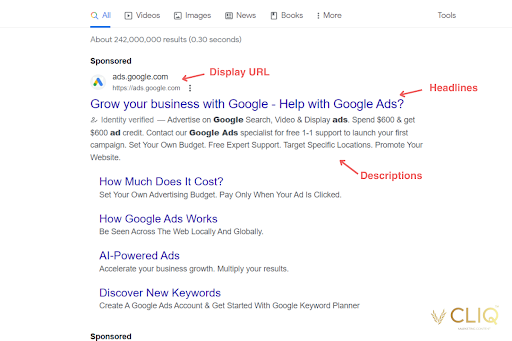As an Australian SEO company, many clients often come to us with questions about ad copy length. What’s the best ad copy length for Google Ads? How do I make my Google Ads convert better with limited numbers of characters? How do we capture the audience’s attention?
This article aims to demystify the complexities surrounding Google Ads ad copy length, offering insights into crafting compelling and compliant ads for your Pay-Per-Click (PPC) campaigns.
Whether you’re fine-tuning your existing Google Ads strategy or stepping into the world of digital advertising for the first time, understanding the nuances of ad copy length is crucial. From discussing the recommended text length for Google search ads to exploring the rules governing ad content, this article will provide a comprehensive guide on how to strike the perfect balance in your ad copy.
Let’s take a closer look at the art of creating effective and engaging ads that resonate with your target audience while maximising your return on investment in Google Ads.
What is the Recommended Ad Text Length for a Google Search Ad?
In order to answer the question of ad length Adwords, we have to understand how typical Google ads are structured and how each individual element contributes to the success of the whole ad.
Anatomy of a Google Search Ad
Headlines
Google Ads typically allows for up to three headlines, each with a maximum of 30 characters. These headlines are the most prominent part of your ad and are crucial for grabbing attention. They should be direct, engaging, and relevant to the search query.
Descriptions
You can include up to two descriptions in a Google search ad, with each description allowing up to 90 characters. The descriptions provide more detailed information about your product, service, or offer and should complement the headlines by adding context or details.
Display URL
The display URL shows your website address. It includes the domain from your final URL and can include two optional “Path” fields, each up to 15 characters, allowing you to add more text to display your URL in a way that reflects the landing page content more accurately.

What to Keep in Mind to Help Improve Your Conversion Rates
Clarity and Relevance
Within the character limits, your ad should clearly state what you are offering and how it relates to the user’s search query. Concise and relevant ad copy is more likely to resonate with the audience.
Keyword Inclusion
Incorporating relevant keywords within these character limits is crucial. This not only helps in matching your ad with the right audience but also improves the ad’s visibility and relevance in search results.
Call-to-Action (CTA)
A strong CTA often fits within these character constraints and is essential for guiding potential customers on what action you want them to take next.
Balancing Brevity with Information
The challenge lies in being succinct while providing enough information to entice the user to click on the ad. It’s a balancing act between brevity and persuasive information.
Best Practices for Maximising Adwords Ad Length
- Prioritise Key Information: Given the limited space, prioritise the most important information or unique selling points in your ad.
- Use Each Element Effectively: Utilise headlines, descriptions, and display URLs effectively to create a cohesive and compelling message.
- Test and Optimise: Experiment with different lengths and formats to see what works best for your target audience. Use A/B testing to compare different versions of your ad copy.
Rules for Writing Great Google Ad Copy
Understanding the rules for Google ad copy goes beyond ad length in Google Ads. It’s crucial for creating effective and compliant ads. These rules are designed to ensure that ads are useful, relevant, and safe for users. Here’s a more detailed look at the main rules and guidelines beyond ad copy length.
Truthfulness and Accuracy
- Avoid Misleading Content: Your ad must accurately reflect what you are selling. Deceptive or exaggerated claims are not allowed.
- Clear Representation: Ensure that your ad, including any claims, offers, or business practices, is honest and straightforward.
Prohibited Content
- No Dangerous Products or Services: Ads must not promote products or services that cause damage, harm, or injury.
- Avoid Offensive or Inappropriate Content: Ads should not contain offensive language, adult content, or promote hate or discrimination.
Editorial and Technical Quality
- Clear and Professional: Ads should be well-formatted, free of grammatical errors, and use proper punctuation. Avoid gimmicky use of words, numbers, or characters.
- Functional Landing Page: The URL in your ad must work correctly and lead to a functioning landing page that matches the offer in the ad.
Prohibited Practices
- No Manipulation: Avoid practices like cloaking (showing different content to users and Google) or other manipulative behaviours.
- No Collecting Personal Information Unlawfully: Ensure that if your ad collects personal data, it does so transparently and securely, respecting user privacy.
Restricted Content and Features
- Comply with Restrictions: Some types of content are allowed but with restrictions, such as alcohol, gambling, healthcare, and financial services. These require adherence to specific guidelines.
- Use of Trade Marks: Be careful with the use of trade marks in your ad copy. You must have authorisation to use any trade marked terms.
Targeting and Personalisation
- Appropriate Targeting: Ads should be appropriately targeted, especially for sensitive categories. Avoid targeting based on sensitive information or personal hardships.
- Respect User Preferences: Honour user preferences and opt-outs. For instance, if a user opts out of personalised advertising, respect this choice in your ad targeting.
Ad Extensions
- Relevant Extensions: If using ad extensions, they must be relevant to the ad and landing page content.
- Accurate Information: Ensure all information provided through ad extensions (like location or call extensions) is accurate and up to date.
How to Write a Compelling PPC Ad Copy
Crafting compelling PPC (Pay-Per-Click) ad copy is an art that requires a blend of creativity, marketing acumen, and a deep understanding of your audience. Here’s how to do it, step-by-step.
Identify and Understand Your Audience
Understanding your audience is the first step in creating effective ad copy. Identify who your target audience is, understand their needs, preferences, and pain points. This knowledge allows you to tailor your message in a way that resonates with them, increasing the relevance and impact of your ads.
Emphasise What Makes You Different
Highlighting your unique sales propositions (USPs) is crucial. Determine what sets your product or service apart from competitors – it could be anything from price, quality, to unique features. Emphasise these benefits in your ad copy, focusing on how they address the user’s needs or solve their problems.
Leverage Emotional Triggers
Emotional triggers can significantly enhance the appeal of your ad copy. Leveraging emotions like humour, excitement, or urgency (fear of missing out) can create a personal connection with your audience and prompt them to act.
Craft a Strong CTA
A strong Call-to-Action (CTA) is a must for effective ad copy. Your CTA should be clear, compelling, and direct, using action-oriented language that instructs the user on the next steps, whether it’s ‘Buy’, ‘Subscribe’, ‘Learn More’, or ‘Get Started’.
Include Relevant Keywords
Incorporating keywords strategically is vital for PPC ad success. Include relevant keywords to improve search visibility, but ensure they are integrated naturally, maintaining the flow and readability of the ad copy.
Keep it Short and Sweet
Clarity and brevity are key elements in PPC ad copy. With character limitations, it’s important to convey your message succinctly. Avoid jargon and complex language; instead, opt for simple, clear wording that your audience can easily understand.
Back Up Your Statements with Proof
Utilising numbers and statistics can make your ad copy more compelling and credible. Including data, special offers, discounts, or exclusive deals can attract the audience’s attention and increase the perceived value of your offer.
Test, Tweak and Refine
Testing and optimisation are crucial for refining your ad copy. Regularly conduct A/B tests with different ad versions to see what works best. Analyse ad performance using analytics tools to make data-driven improvements and adjustments.
Make Your Ads Match Your Brand
Finally, ensure consistency in your ad copy. It should align with your overall brand voice and messaging. Also, ensure that the ad’s message is consistent with the content on the landing page to avoid confusing your audience and to maintain a cohesive user experience.

As you can see, mastering the craft of PPC ad copy is a pivotal aspect of succeeding in the digital advertising realm. It’s a multifaceted process that demands a deep understanding of your target audience, a clear articulation of your unique selling propositions, and the ability to invoke emotional responses that drive action. The journey begins with a thorough understanding of who your audience is, what they need, and what motivates them. This foundational knowledge is what makes your ad copy not just seen, but felt and acted upon.
The art of PPC ad copy lies in its ability to succinctly yet effectively convey a message that resonates. The use of USPs and emotional triggers can transform a simple ad into a compelling narrative that speaks directly to the heart of the audience’s needs and desires. This, coupled with a strong, clear call-to-action, moves the audience from interest to action. Moreover, the strategic incorporation of keywords ensures that your ad is not only relevant but also discoverable in a sea of digital content.
Clarity and brevity are the twin pillars upon which effective PPC ad copy stands. In a landscape where attention spans are short, and competition is fierce, the ability to communicate value quickly and effectively is paramount. This is where the skill of crafting concise yet powerful messages comes into play, using language that is accessible and engaging to your audience.
The use of data, like numbers and statistics, adds a layer of credibility and trust to your ad copy, enhancing its persuasiveness. However, the journey doesn’t end with the creation of the ad. The continuous process of testing, analysing, and optimising is what shapes and perfects your ad strategy over time, ensuring that your copy not only meets but exceeds the evolving needs and preferences of your audience.
Consistency in messaging and alignment with your overall brand voice are essential in building trust and recognition among your audience. This consistency extends to ensuring a seamless transition from ad copy to landing page, providing a cohesive and satisfying user experience.
Don’t forget to check out our detailed articles on crafting compelling headlines, conducting keyword research and understanding the power of storytelling in ads. Book a free sales consultation with one of our Australian PPC and SEO experts today before you launch your next Google Ads campaign!




